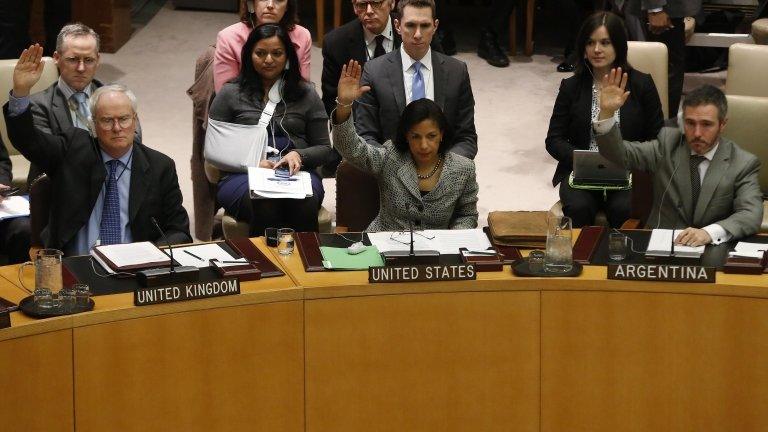How potent are North Korea's threats?
- Published

Since the last round of UN sanctions in 2013, North Korea has unleashed a series of threats against the US and South Korea. The BBC examines how much of a threat North Korea really poses.
North Korea's threats
North Korea has frequently employed bellicose rhetoric towards its perceived enemies.
In 1994 South Koreans stocked up on essentials in panic after a threat by a North Korean negotiator to turn Seoul into "a sea of fire" - one which has been repeated several times since.
After US President George W Bush labelled it part of the "axis of evil" in 2002, Pyongyang said it would "mercilessly wipe out the aggressors".
In June 2012 the army warned that artillery was aimed at seven South Korean media groups and threatened a "merciless sacred war".
There is also a pattern of escalating threats whenever South Korea gets a new leader, with misogynist rhetoric directed at South Korea's first female President Park Geun-hye after she was elected in 2013.
While many observers dismiss the rhetoric as bluster, others warn of "the tyranny of low expectations" when it comes to understanding North Korea, because there have been a number of serious regional confrontations.
North Korea expert Aidan Foster-Carter says that we may be witnessing true leadership character of Kim Jong-un
"If you follow North Korean media you constantly see bellicose language directed against the US and South Korea and occasionally Japan is thrown in there, and it's hard to know what to take seriously. But then when you look at occasions where something really did happen, such as the artillery attack on a South Korean island in 2010, you see there were very clear warnings," Professor John Delury at South Korea's Yonsei university told the BBC.
The North consistently warned that military exercises being conducted in the area would spark a retaliation.
Mr Delury argues that misreading Pyongyang's intentions and misunderstanding its capabilities has kept the US and South Korea stuck in a North Korean quagmire., external
Picking apart the bluster
In recent years, the North has warned of a pre-emptive nuclear attack on the US in response to the prospect of joint military exercises between South Korea and the US.
"Any time a nation threatens pre-emptive nuclear war, there is cause for concern. North Korea is no exception, with its... shift in rhetoric from accusing the US of imagining a North Korean ballistic missile threat, to vowing to use its ballistic missile capabilities to strike the continental US," says Andrea Berger, from the Royal United Services Institute in London.

Former leader Kim Jong-il in friendlier times between the US and North Korea
But many experts believe these threats come from the North's desire for a peace treaty with the US.
"It seems to believe that it will not be taken seriously until it can enter talks on this issue with sizeable military strength. This is in line with Pyongyang's historic military-first policy," Ms Berger says.
The US is often centre-stage. "There are cases where the threats are geared towards getting on the radar particularly of the White House, which tries to ignore North Korea as a matter of policy. Pyongyang's message is - you cannot break us, we will not go away, you have to deal with us," Mr Delury said.
While some worry that the North may provoke a conventional forces border clash with South Korea, threats to launch a nuclear strike are often seen as a bluff because it is thought that a nuclear attack would be suicidal for the regime.
Reactor restart
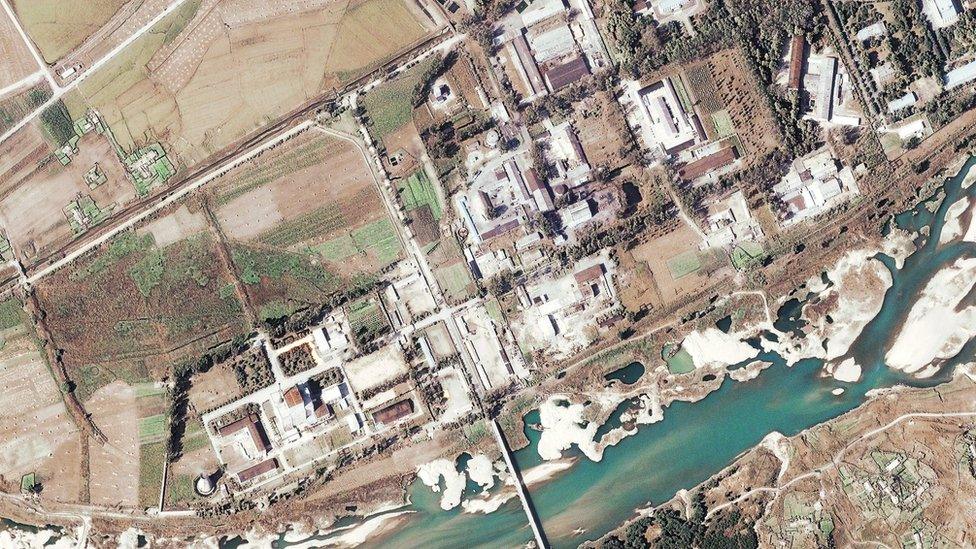
The reactor provided plutonium for Pyongyang's nuclear weapons programme
But worries that it may be serious will have been boosted by the news that North Korea says it has restarted its main nuclear complex at Yongbyon.
The facility is at the centre of its nuclear weapons programme and is thought to be the country's main source of weapons-grade plutonium.
North Korea suspended activity at the reactor in 2007 under an aid-for-disarmament deal, but began renovating it after its last nuclear test in 2013.
Analysts suggest it is capable of producing around six kilograms of plutonium a year - enough for one nuclear bomb.
In a statement carried by North Korea's official KCNA news agency on 15 September 2015, the director of the country's atomic energy institute said that it was working to improve its nuclear weapons in quality and quantity.
It said North Korea was ready to respond to what it called US hostility with nuclear weapons. The announcement is likely to raise tensions significantly.
The announcement comes a day after the country said it would proceed with more rocket launches, promising to launch "satellites'' aboard long-range rockets.
It put its first satellite into space with a long-range rocket in late 2012, in what the UN said was a banned test of ballistic missile technology and imposed sanctions.
The US is concerned that such long-range rockets could eventually threaten its mainland with atomic bombs.
Is the US a real target?
South Korean tests carried out on fragments of the rocket fired in December 2012 indicated it would have had a range of more than 10,000km (6,200 miles), putting the US well within striking distance.
However, there is little evidence that North Korea has yet developed a guidance system to ensure an accurate strike, or the re-entry technology to bring an intercontinental ballistic missile back down to hit its target.
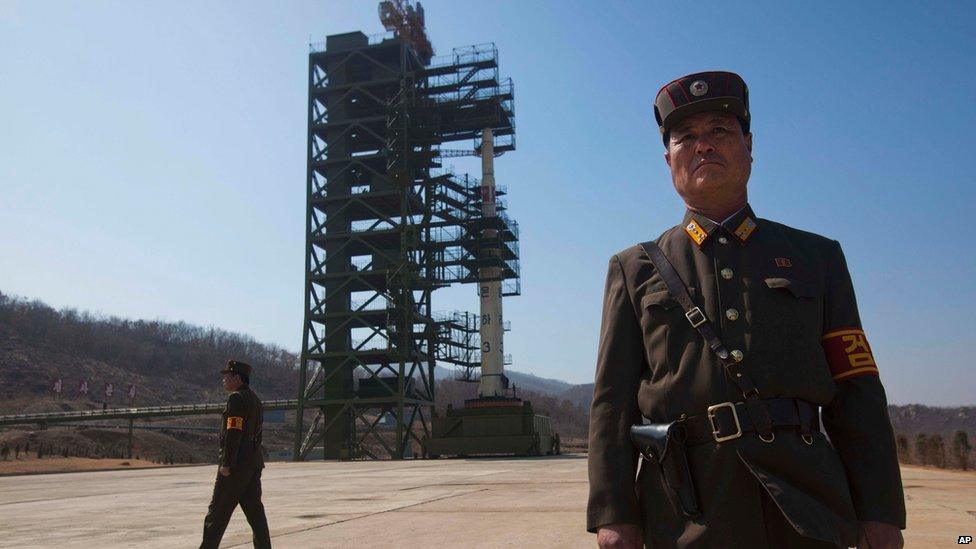
North Korea successfully launched a rocket in December 2012
Pyongyang's ability to carry out a nuclear strike on the US is even less certain, as analysts say it is difficult to assess the North's claims to have managed to create a small enough nuclear device to be mounted on a warhead.
December 2012's missile launch, the International Institute for Strategic Studies said,, external proved that North Korea has something that can hit American shores but it said that any "functioning nuclear-tipped intercontinental ballistic missile is still at least several years away".
But the first indication of a more concerning assessment came in a US intelligence report leaked in April 2013 which said the North may now be capable of firing a nuclear-armed missile, though with "low reliability".
The Pentagon later denied the report, stating it would be "inaccurate to suggest that the North Korean regime has fully tested, developed or demonstrated those kinds of nuclear capabilities".
Nevertheless North Korea has shown it is determined to pursue this technology. Its February 2013 underground nuclear test was double the size of the previous one in 2009.
The North claimed that test detonated "an atomic warhead that is lighter and miniaturised but with a big explosive charge".
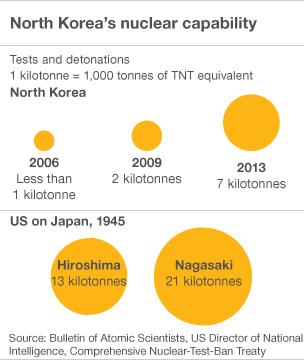
But while the North might struggle to hit the US, it could target US interests in the region. There are more than 28,000 US military personnel based in South Korea, another 40,000 in Japan and a large military base in Guam, a US territory off the Philippines.
The US is also obliged to defend Japan if it is attacked under the terms of the post-World War II security alliance between Washington and Tokyo, external.
Even if a missile is launched from the North, Washington has insisted it is "fully capable" of blocking any attack against it or its allies.
It is also worth noting that the only US Navy ship being held by a foreign power is in Pyongyang.
The USS Pueblo was captured while on a surveillance mission in 1968. It was in international waters during its mission and nobody imagined that the North Koreans might capture it - so the crew were unprepared.
One crew member died and 82 were taken to North Korean prison camps, where they were held for 11 months, accused of spying. They were released once the US apologised and insisted the ship had not been spying - later retracting both statements.
North Korea's neighbours
Since the Korean War ended, Pyongyang has repeatedly shown its ability to strike neighbours and foreign interests in the region, often in response to what it sees as provocation.
In 1967, it attacked and sank South Korea's vessel the Dangpo as it patrolled in the Yellow Sea, killing 39 of the crew.
There followed a period of relative calm - though sabre-rattling continued - as South Korea pursued its "Sunshine Policy", an attempt to steadily build closer relations and reduce tensions between 1998 and 2008.
But in March 2010, the South Korean warship Cheonan travelling close to the disputed maritime border - known as the Northern Limit Line (NLL) - was split in half by an explosion, leaving 46 sailors dead, external. South Korea said the only "plausible explanation" was that it had been hit by a North Korean torpedo. Pyongyang denied this.
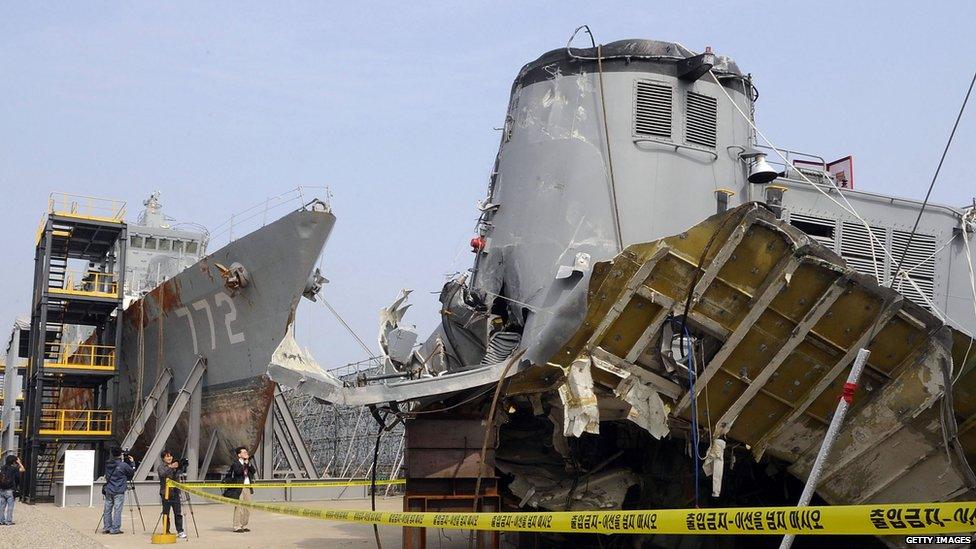
The wreckage of the Cheonan was salvaged from the sea bed
In November of that year, North Korean troops launched an artillery strike on South Korea's Yeonpyeong Island, just south of the NLL. Two South Korean marines and two civilians were killed. Pyongyang said the clash was provoked by a South Korean military drill being conducted near the island.
North Korea has a conventional army of more than 1.1m, but its equipment is thought to be Soviet-era and in poor condition.
However it still has a vast amount of artillery lined up along the demilitarised zone, and the South Korean capital Seoul is within its reach.
According to the International Institute for Strategic Studies' military balance, external, approximately 65% of North Korea's military units, and up to 80% of its estimated aggregate firepower are within 100km of the DMZ.
- Published10 August 2017
- Published10 August 2017
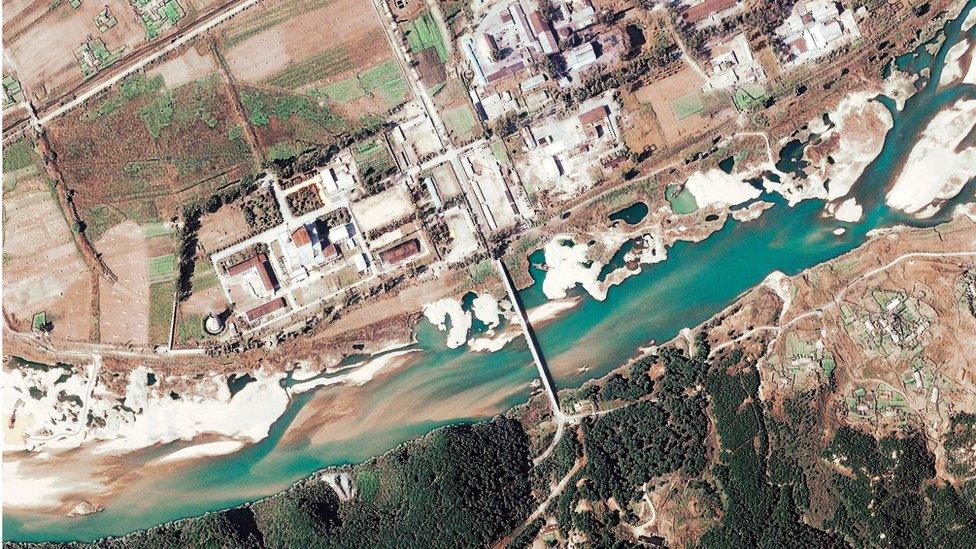
- Published3 September 2017

- Published8 March 2013
